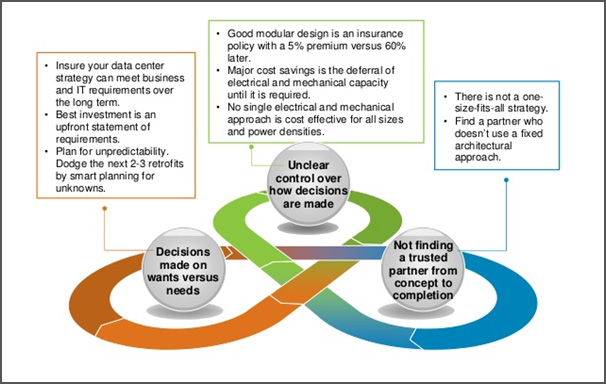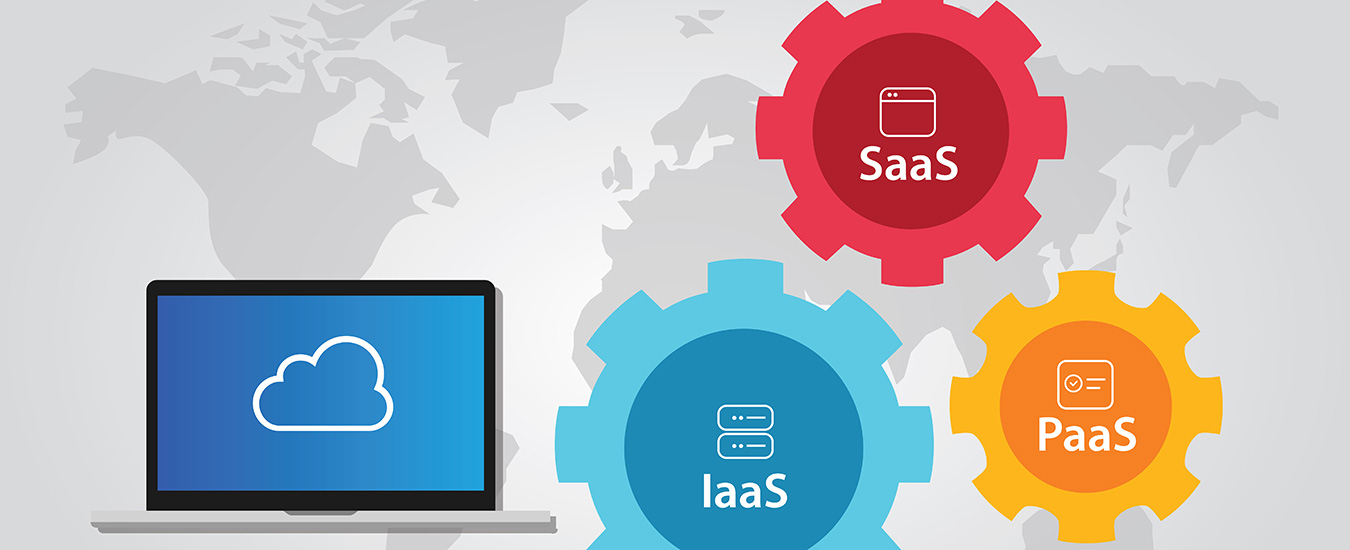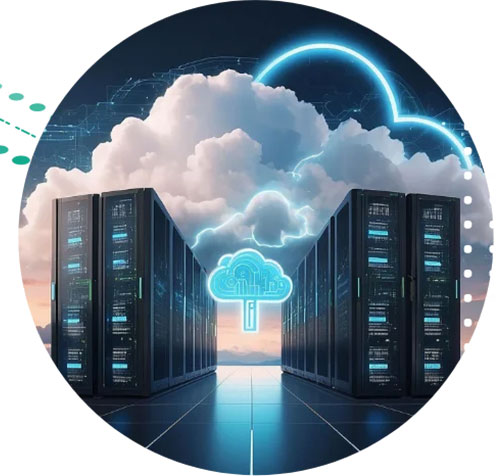Hyper convergence And Its Growing Importance
For years, Data Centers formed the backbone of IT infrastructure, in which primarily hardware-driven convergence was deployed to assemble several parts of the IT function. However, in this type of infrastructure, the compute, storage, and networking components are discrete and thus difficult to manage. Hyperconvergence is a system that creates a pool of IT resources, which can be shared over a network by different users.
Going a step further, the components are brought together, which appear as a single entity to the user through the creation of clusters of nodes. In a hyperconverged environment, the components cannot be separated. The software-defined elements are implemented virtually, with seamless integration into the hypervisor environment. ComputerWorld called hyperconvergence “Data Center in a box” as early as 2012 when the concept was only catching on. Today, hyperconvergence is a $5 billion industry and is growing fast.
Why is Hyperconvergence So Popular?
Development of infrastructure earlier entailed a huge spend as many infrastructure units like SANs and blade servers were required. Hyperconvergence brought a pre-integrated infrastructure bundled in a single box, which is managed with a unified layer. Significant cost savings are realized as a hyperconverged infrastructure could be built over low-cost hardware.
Pure software-based architectures and hybrid options make a hyperconverged infrastructure model highly flexible. Using this flexibility, organizations are required to deploy resources only on an as-needed basis, and investment is needed only for the required storage. In the era of unpredictable data growth, this flexibility acts as a reward.
The integrated architecture of a hyperconverged infrastructure makes it robust, in not just handling the business database processing workloads, but also the mission-critical applications. High-performance computation, speed, flexibility, agility, and cost saving are a few benefits of hyperconverged infrastructure. These capabilities have been attractive enough for organizations to move to hyperconverged infrastructure in the past few years.
Need for Hyperconvergence in Business
Today, mission-critical applications have to deal with demanding workloads that fluctuate based on real-time interactions between users and machines. The magnitude of workloads, unimaginable in the past, are now getting into the forefront like Big Data, IoT, Machine Learning, and Artificial Intelligence. These workloads provide business advantages such as operational efficiencies and competitive edge by delivering actionable insights, but an infrastructure that has inherent scalability is required to handle these workloads. Hyperconvergence exactly fits this requirement. WAN latency, which was dreaded earlier with Tier 1 workloads, is no more a concern, thanks to hyperconvergence.
Modern businesses host their solutions on the cloud. Whether it is a private cloud, public cloud or a hybrid cloud, HCI (Hyperconverged Infrastructure) can streamline the resources with finesse. Regulatory compliance and other types of compliance become easier with HCI. The hybrid infrastructures consisting of cloud and on-premise infrastructure provides greater flexibility, data privacy, and data protection when coupled with HCI.
How does HCI make a difference to a business? If the cost of analysis is consuming an unreasonable part of the organization’s business cost, then it becomes difficult to sustain. Hyperconvergence addresses this problem by offering high scalability, on-the-go adoption flexibility, and resource optimization to ultimately reduce overheads and deliver value.
An example of how HCI can deliver scalability and flexibility to a business could be a VDI rollout. Before any company would do a VDI rollout on a large scale, the first step would be to test the system performance with a minimum viable product. However, when this platform is configured for scaling to meet the growing business demands, one single error in prediction of performance could prove to be costly, compromising the whole roll-out. Hyperconvergence ensures the reliability of this process as a provision exists for adding nodes to clusters any time so that scaling for performance doesn’t even count as an issue.
Data Center consolidation is another important area of HCI application that brings savings for a business through resource optimization. Hyperconvergence not only brings down the amount of hardware by eliminating SAN from a network but also reduces the variety of components used through data compression and deduplication. Cutting down both on software and hardware components cuts down the cost of physical infrastructure and reduces complexity.
How HCI Can Shape Businesses
Several applications and benefits have emerged with the wide adoption of HCI and here are some that are shaping modern businesses today.
Digital Transformation with HCI
Digital transformation is seeing wider adoption as companies are keen to embrace evolving technologies and build sustainable competitive advantages. This is because HCI gives them a single flexible platform to consolidate resources and virtualize workloads. The HCI environment can serve as the backbone for the organization’s digital transformation strategy. It is robustly designed for scalability, and so as the organization’s workloads increase, additional components can be provisioned to meet the spurt in demand. As compared to traditional 3-tier architecture, this flexibility would deliver savings in the TCO (Total Cost of Ownership).
Resource Optimization with HCI
Many businesses still use manual processes for provisioning service processes, severely constraining IT efficiencies. This also demands a significant CAPEX, in addition to causing increased workload. HCI can save both cost and time that goes into provisioning by providing a low-cost infrastructure and several automation features. Therefore the organization is required to spend much less time in provisioning, managing, operating, and maintaining IT assets.
Moreover, the organization’s network, storage, and compute can all be scaled up on demand in a pay-per-use model, propelling optimization. This means that every added component gives more value at a lower cost. Organization’s assets also get utilized most efficiently.
With HCI come many benefits that are acting as triggers for its wider adoption and growth. More businesses keen on enhancing their enterprise capabilities would adopt HCI for their needs, and the future looks promising for this technology.
Sify’s many enterprise-class cloud services deliver massive scale and geographic reach with minimum investment. We help design the right solution to fit your needs and budget, with ready-to-use compute, storage and network resources to host your applications on a public, private or hybrid multi-tenant cloud infrastructure.
M2M is shifting to M2M
The final eulogy to ‘Man is the Master of the Machine’ has been written.
In the movie Terminator 3, the sequel delves into the takeover of earth by machines, until the very end, when the machine itself has a change of heart. However ominous those signs are, what is undeniable is that the age of machines is upon us.
From mere input mongers to making sense of the mountain of data, cataloguing them, analysing them and delivering a seemingly analogues interpretation of it, machines have become the new indispensable smartphone for today’s Enterprise. Within this paradigm, the original input feeder, the man, is now relegated to building strategies on top of the results that the machine has spewed to him. The shift from Man to Machines, to Machines to Machines is now here to stay.
The component that has built itself into an indispensable position in this entire equation is that of the Data Center. Not the legacy coLocation versions but the new age, intelligent data player that offers compute, store, analyze, cohabits the Cloud and Applications within itself. One that is intelligent and elastic enough to accommodate the growing data demands of tech-dictated enterprises.
The Data Center, referred rather insipidly to its very reason of its existence, is now a chameleon in the entire IT structure. In some cases, it is the eventual residency point for the data. In others, it is starting point of information that has been decoded and awaits a decision. And in between, is the binding agent in an ever-spawning network.
Come to think of it. What if it was removed from the equation? Or perhaps, more benevolently, scaled down to just a rudimentary Data Center. Before we answer that question, here’s something of an analogy.
Imagine if all your data was not retrievable one not-so-fine morning. Will we see a repeat of the dark ages? Perhaps so. It is therefore not a far-fetched misnomer when Data is referred to as the new economy.
So, what size of data is the world coming to? Here’s a curtain raiser.
Shantanu Gupta, director of Connected Intelligent Solutions at Intel, introduces the next-generation prefixes for going beyond the yottabyte; brontobyte and gegobyte.
A brontobyte, which isn’t an official SI prefix, but is apparently recognized by some people in the measurement community, is a 1 followed by 27 zeros. Gupta uses it to describe the type of sensor data we’ll get from the internet of things. From there, a gegobyte (10 to the power of 30) is just a short distance away.
Now imagine the computational strength required to make sense of this volume. Companies will hence need to have a future-proof strategy in place for collecting, organizing, cleansing, storing, and securing data – and for applying analytics to derive real-time insights to transform their businesses.
A story in Information Management highlights “Big Data Analytics: The Currency of the 21st Century Enterprise.” Quite an interesting read. The gist of the argument: Personal data has an economic value that can be bought, sold, and traded.
Emerging technologies are driving transformation within organizations. The year 2019 will see Artificial Intelligence (AI) and Machine Learning (ML) driving change in enterprises. We already see numerous use cases of these emerging technologies in industries such as BFSI, healthcare, telecom, manufacturing, and home automation. These technologies can cull data and get real-time insights about the business and offer timely solutions or corrective action, often without human intervention. AI-backed automation and predictive analytics will help predict challenges that may arise; it will streamline operations, save costs, enhance customer experience, and perform repetitive tasks. While the adoption of ML technologies will lead to exponential growth of enterprise data, the accuracy of outputs is a factor of the sanctity of the input.
That calls for a trustworthy Data Center partner, not only to store the data but also to analyze and manage it. The ideal Data Center partner should do both — cater to current requirements and also adapt to the changing IT landscape.
According to a Frost & Sullivan report, from an APAC standpoint, it said, the Data Center services market will grow at a compound annual growth rate (CAGR) of 14.7% from 2015-2022 to reach US$31.95 billion at the end of 2022. Specifically, the India Data Center market is expected to reach values of approximately $4 billion by 2024, growing at CAGR of around 9% during 2018-2024. Major cities such as Mumbai, Bangalore, and Hyderabad are witnessing high investments of local and international operators in the Indian market. The increasing construction of hyperscale facilities with the power capacity of over 50 MW will fuel the need for innovative infrastructure in the market over the next few years.
A recent study of 500 International Data Centers threw up key insights into what constitutes a well thought out Data Center strategy and one that ticks the right boxes for an Enterprises when selecting a DC partner.

It is therefore evident that the Data Center should be built to solve a business problem – both current and future, should have the flexibility to adapt to changing demands and should be agile enough to accommodate newer dynamics of the business. The paradox in the situation is that as the Data Center grows, the density of the data within it will also expand; all this on hardware that will significantly shrink. Computing power therefore becomes the differentiator and will help negate any push backs that volume will bring up.
It is not lost on DC players that Security is the other differentiator. If this data falls into the wrong hands, it could create havoc, resulting in million dollar loses for corporations. It would impact the credibility of trustworthy institutions, entrusted with sensitive consumer data. Here are two recent incidents.
- In January 2019, the HIV-positive status of 14,200 people in Singapore was leaked online. Details included identification numbers, contact details, and addresses were available in the public domain.
- In December 2018, a cyber-attack exposed the records of 500 million guests of the hotel giant Marriott International. The attack occurred over a period of four years and was traced back to a Chinese spy agency.
The emphasis on security and compliance is even stronger now with the European Union’s General Data Protection Regulation (GDPR). In fact, GDPR is hailed as one of the most critical pivots in data privacy rules in the past two decades. It is going to fundamentally change how data is handled, stored, and processed.
Given the geographic-agnostic nature of such attacks, it is not lost on Indian IT companies to be wary of an impending attack. The Government-steered Personal Data Protection Bill mandates stringent rules for security, consent of customers, data privacy and data localization. Indian businesses will need to realign their Data Center strategies to comply with this Bill, which could eventually become law. This law will push business leaders to rethink identity and access security, encryption, data systems and application security, cloud security, and DDoS, among other things. And that’s where machine to machine will score higher. Little wonder that CIOs are in favour of the benefits of automating the whole of atleast a majority of the work chain.
Machine to machine allows for a predictable, systemic patterns, allowing for hyperscale computing, deep-dive analytics, trend spotting, vulnerability recognition and elimination, risk mitigation, even alternate computing, without the vulnerabilities of man to machine directions. The choice therefore in front of the CIO are to go with a service provider who is an SI or an IT architect who has provisioned the entire landscape and hence can implement machine-derived predictable automated results.
Does this mean it is the end of human thinking? Quite to the contrary, it started because of human thinking.
Sify has always taken pride in supporting technology advancements since the launch of its first Enterprise Data Center in 2001 and we invite you to download a copy of Gartner’s Market Guide that tracks the evolution of Data Center Services Market in India and highlights the wider choice of providers, hosting locations and services.
A CFO for All Seasons: Interview of M P Vijay Kumar, CFO on CFOThoughtLeader.com
I have one primary agenda for the next 12 months: to ensure that the organization has enough support available across all of the functions to enable scale. I want to ensure that every part of the organization is in a position to enable scale and monetize market opportunities, explains Vijay. At times, it must seem to Vijay Kumar that his 12-year tenure as a CFO has been spent not at one company, but three. This must be a sense that most C-suite members at Sify Technologies likely experience in light of the company’s appetite for continuous reinvention.
Listen to the Interview
At times, it must seem to Vijay Kumar that his 12-year tenure as a CFO has been spent not at one company, but three. This must be a sense that most C-suite members at Sify Technologies likely experience in light of the company’s appetite for continuous reinvention.
Back in 2007, when Kumar arrived at the information and communications technology company, Sify was widely known as a consumer business–and one perhaps without the will or resources to attract business customers. As CFO, Kumar was part of a management team tasked with changing that perception both inside and outside of Sify’s existing world. More specifically, Kumar and his finance team were responsible for calculating and tracking the necessary capital expenditures that could provide the new business-to-business infrastructure that business customers would demand. Of course, no sooner was the infrastructure in place then Sify decided to super-size its business services menu, making it a bonafide provider of technology services. Looking forward, Kumar says that Sify’s latest innovation involves not so much its customer offerings but how customers buy its offerings by using outcome-based pricing. This is an approach that Kumar believes will empower Sify to open a new chapter of growth.
https://www.cfothoughtleader.com/cfopodcasts/493-vijay-kumar-cfo-sify-technologies/
Cloud Service Models Compared: IaaS, PaaS & SaaS
Cloud computing has been dominating the business discussions across the world as it is consumed by the whole business ecosystem and serves both small and large enterprises. Companies are faced with a choice between three predominant models of cloud deployment when adopting the technology for their business. A company may select from SaaS, PaaS, and IaaS models based on their needs and the capabilities of cloud service models. Each model has inherent advantages and characteristics.
SaaS (Software as A Service)
SaaS service models have captured the largest share in the cloud world. In SaaS, third-party service providers deliver applications while the access to them is granted to a client through a Web interface. The cloud service provider manages everything including hardware, data, networking, runtime, data, middleware, operating systems, and applications. Some SaaS services that are popular in the business world are Salesforce, GoToMeeting, Dropbox, Google Apps, and Cisco WebEx.
Service Delivery: A SaaS application is made available over the Web and can be installed on-premise or can be executed right from the browser, depending upon the application. As opposed to traditional software, SaaS-based software is delivered predominantly in subscription-based pricing. While popular end-user applications such as Dropbox and MS Office Apps offer a free trial for a limited period, their extended usage, integrations, and customer support could come at a nominal subscription cost.
How to identify if it is SaaS? If everything is being managed from a centralized location on a cloud platform by your service provider, and your application is hosted on a remote server to which you are given the access through Web-based connectivity, then it is likely to be SaaS.
Benefits: The cost of licensing is less in this model, and it also provides a mobility advantage to the workforce as the applications can be accessed from anywhere using the Web2. In this model, everything at the back-end is taken care of by the service provider while the client can use the features of specific applications. If there are any technical issues faced in infrastructure, the client can depend on the service provider to remove them.
When to Choose? You can choose this model if you do not want to take the burden of managing your IT infrastructure as well as the platform, and only want to focus on the respective application and services. You can pass on the laborious work of installation, upgrading, and management to the third-party companies that have expertise in public cloud management.
PaaS (Platform as A Service)
In the PaaS service model, the third-party service provider delivers software components and the framework to build applications while clients can take care of the development of the application. Such a framework allows companies to develop custom applications over the platform that is served. In this model, the service provider can manage servers, virtualization, storage, software, and networking while developers are allowed to develop customized applications. PaaS model can work with both private cloud and public cloud.
Service Delivery: A middleware is built into the model which can be used by developers. The developer does not need to do hard coding from scratch as the platform provides the libraries. This reduces the development time and enhances the productivity of an application developer enabling companies to reduce time-to-market.
How to identify if it is PaaS? If you are using integrated databases, have resources made available that can quickly scale, and you have access to many different cloud services to help you in developing, testing, and deploying applications, it is PaaS.
Benefits: The processes of development and testing are both cost-effective and fast. PaaS model delivers an operating environment and some on-demand services such as CRM, ERP, and Web conferencing. With PaaS, you can also enjoy additional microservices to enhance your run-time quality. Additional services can also be availed such as directory, workflow, security, and scheduling. Other benefits of using this service model include cross-platform development, built-in components, no licensing cost, and efficient application Lifecycle management.
When to Choose? PaaS is most suited if you want to create your application but need others to maintain the platform for you. When your developers need creative freedom to build highly customized applications and require you to provide tools for development, this would be the model to select.
IaaS (Infrastructure as A Service)
In this cloud service model, Data Center infrastructure components are provided including servers, virtualization, storage, software, and networking. This is a pay-as-you-go model which provides access to all services that can be utilized as per your needs. IaaS is like renting space and infrastructure components from a cloud service provider using a subscription model.
Service Delivery: The infrastructure can be managed remotely by a client. On this infrastructure, companies can install their own platforms and do the development. Some popular examples of IaaS service models are Microsoft Azure, Amazon Web Services (AWS), and Google Compute Engine (GCE).
How to identify if it is IaaS? If you have all the resources available as a service, your cost of operation is relative to your consumption, and you have complete control over your infrastructure, it is IaaS.
Benefits: A company need not invest heavily in infrastructure deployment but can use virtual Data Centers. A major advantage of this service model is that with it, a single API (Application Programming Interface) can be used to access services from multiple cloud providers. A virtualized interface can be used over pre-configured hardware, and platforms can be installed by a client. IaaS service providers also give you security features for the management of your infrastructure through licensing agreements.
When to Choose? IaaS service model is most useful when you are starting a company and need hardware and software setups for your company. You may not commit to specific hardware or software but can enjoy the freedom of scaling up anytime you need with this deployment.
You can choose between the three models depending on your business needs and availability of resources to manage things. Irrespective of the model you choose, cloud Data Center does provide you a great cost advantage and flexibility with experts to back you in difficult times. Your choice of the cloud service model would affect the level of control you have over your infrastructure and applications. Depending on the needs of your business, you can select a model after a careful evaluation of the benefits of each of the cloud service models.
Sify’s many enterprise-class cloud services deliver massive scale and geographic reach with minimum investment. We help design the right solution to fit your needs and budget, with ready-to-use compute, storage and network resources to host your applications on a public, private or hybrid multi-tenant cloud infrastructure.
From Legacy to the Modern-day Data Center Cooling Systems
Modern-day Data Centers provide massive computational capabilities while having a smaller footprint. This poses a significant challenge for keeping the Data Center cool, since more transistors in computer chips, means more heat dissipation, which requires greater cooling. Thereby, it has come to a point where traditional cooling systems are no longer adequate for modern Data Center cooling.
Legacy Cooling: Most Data Centers still use legacy cooling systems. They use raised floors to deliver cold air to Data Center servers, and this comes from Computer Room Air Conditioner (CRAC) units. These Data Centers use perforated tiles to allow cold air to leave from the plenum to enter the main area near the servers. Once this air passes through the server units, heated air is then returned to the CRAC unit for cooling. CRAC units have humidifiers to produce steam for running fans for cooling. Hence, they also ensure the required humidity conditions.
However, as room dimensions increased in modern Data Centers, legacy cooling systems become inadequate. These Data Centers need additional cooling systems besides the CRAC unit. Here is a list of techniques and methods used for modern Data Center cooling.
Server Cooling: Heat generated by the servers are absorbed and drawn away using a combination of fans, heat sinks, pipes within ITE (Information Technology Equipment) units.1 Sometimes, a server immersion cooling system may also be used for enhanced heat transfer.
Space Cooling: The overall heat generated within a Data Center is also transferred to air and then into a liquid form using the CRAC unit.
Heat Rejection: Heat rejection is an integral part of the overall cooling process. The heat taken from the server is displaced using CRAC units, CRAH (Computer Room Air Handler) units, split systems, airside economization, direct evaporative cooling and indirect evaporative cooling systems. An economizing cooling system turns off the refrigerant cycle drawing air from outside into the Data Center so that the inside air can get mixed with the outside air to create a balance. Evaporated water is used by these systems to supplement this process by absorbing energy into chilled water and then lowering the bulb temperature to match the temperature of the air.
Containments: Hot and cold aisle containment use air handlers to contain cool or hot air and let the remaining air out. A hot containment would contain hot exhaust air and let cooler air out while cold containment would do vice versa.3 Many new Data Centers use hot aisle containment which is considered as a more flexible cooling solution as it can meet the demands of increased density of systems.
Closed-Couple cooling: Closed-Couple Cooling or CCC includes above-rack, in-rack or rear-door heat exchanger systems. It involves bringing the cooling system closer to the server racks itself for enhanced heat-exchange.2 This technology is very effective as well as flexible with long-term provisions but requires significant investments.
Conclusion
Companies can choose a cooling system based on the cooling needs, infrastructure density, uptime needs, space factors, and cost factors. The choice of the right cooling system becomes critical when the Data Center needs to have high uptime and avoid any downtime due to energy issues.
Sify offers state of the art Data Centers to ensure the highest levels of availability, security, and connectivity for your IT infra. Our Data Centers are strategically located in different seismic zones across India, with highly redundant power and cooling systems that meet and even exceed the industry’s highest standards.
Five ways cloud is transforming the business world
Organizations around the globe are inclining towards the cloud technology and cloud platforms for enhanced data management and security, cost-efficient services, and of course, the ability to access distributed computing and storage facilities from anywhere, anytime.
In a recent study it was found that nearly 41% of the surveyed respondents showed interest in investing in and increasing the spending on cloud technologies, with over 51% large and medium companies planning to expand their budgets for cloud tech. As a result of this rapidly increasing interest and demand for cloud-based services, cloud computing service providers and cloud computing companies are on the rise.
But, why is the business world rapidly shifting to the cloud computing?
Cloud computing can bring about major positive transitions for businesses as it offers grounds for innovation coupled with organizational efficiency. Let’s look at the five ways in which cloud computing is transforming the business world.
1. Enhanced Operations
One of the best features of cloud computing solutions is that they can scale as a company grows. Cloud computing service providers allow companies (big or small) to move a part or all of their operations from a local network to the cloud platform, thereby making it easier for them to access a host of facilities such as data storage, data processing, and much more. Usually, cloud computing service providers have a strong and dedicated support team that can assist users through real-time communication.
Another major benefit of using a third-party service is that the responsibility of data and system management and the associated risks falls under the purview of the service provider. So, one can take advantage of the cloud services without having to worry about the risks.
2. Cost Reduction
Cloud computing services are highly cost-effective. Companies and businesses using the services of third-party cloud computing providers need not bear extra expenses in setting up the required infrastructure or hire additional in-house IT professionals for installing, managing, and upgrading the systems. As mentioned above, all these needs are taken care of by the cloud computing providers. Also, small companies can take advantage of the same tools and resources that are used by large corporations, without having to incur additional IT overhead. This means cloud computing services can reduce IT costs and increase the operating capital which can be steered towards improving other core areas of the business. With increased productivity, efficiency, flexibility and reduced costs, businesses can become more innovative and agile in their operations.
3. Fortified Security And Storage
Unlike the past, cloud computing service providers are now extremely cautious about the security and safety of their users. All the sensitive user data, files, and other important documents are stored across a distributed network. Since the data is never stored in one single physical device and the enforcement of encrypted passwords and restricted user access, the safety and security of the user data are enhanced. Steps are taken to further protect the data by incorporating firewall and anti-malware software within the cloud infrastructure.
Furthermore, cloud computing service providers allow businesses to leverage the best quality hardware for faster data access and exchange. This further boosts the operational efficiency, speed, and productivity.
4. Improved Flexibility
With cloud services, employees can access the same resources while working remotely that they could access while working from the office. Thanks to cloud technology, employees can now work within the comfort zone of their homes and get work done seamlessly. Mobile devices make this even more convenient by allowing employees to enjoy the flexibility of working at their own pace while also facilitating real-time communication between them and the users. Cloud companies can, thus, deliver better and more efficient services by investing in a band of dedicated remote employees instead of maintaining a full-house of on-site employees. This fast increasing mobile workforce delivering quality cloud solutions is a big reason why businesses today are making the transition to cloud computing providers.
5. Better Customer Support
Today, cloud computing providers have upgraded their game by offering an array of support options for businesses to choose from. Apart from the conventional telephone service, businesses can now opt for AI-powered chatbots that can interact with customers like a real human being. As most cloud computing providers offer impressive bandwidth, it facilitates improved communications which allow a firm’s customer support team to handle customers requests swiftly. The speedy and prompt delivery of support services will ensure that the customers don’t have to wait for hours for their queries/requests to be addressed. All this together leads to a richer customer support experience.
The end result? Happy customers who endorse the brand to a larger network.
Cloud computing is a versatile platform that offers an extensive variety of solutions to the common challenges and hurdles that businesses face in their day-to-day functioning. And that is precisely why cloud computing solutions and services are increasingly penetrating the business world by the minute and transforming it for the better.
Opt for dedicated private cloud infrastructure services for your mission-critical workloads.
To learn more about SIFY’S GOINFINIT PRIVATE – an enterprise-grade, fully integrated private cloud IT platform with specific controls, compliance and IT architecture available in a flexible consumption model.
Five major challenges during Data Center migration
Data Center migration is essential for companies looking to meet the growing demands of the IT/data services. However essential, this process comes with its own set of challenges. Thus, it would be wise to tread carefully and assess both the core necessities and challenges that usually accompany Data Center migration.
Data Center migration involves moving a part or the entire IT operation of a company from the existing Data Center to another, either physically or virtually (shared Data Centers via the cloud). Here are the five basic challenges, or rather considerations to make for a successful Data Center migration:
1. Service Provider Credentials
Before rushing into a collaboration with a Data Center migration provider, it is important to assess the service providers business; what is their track record of providing Data Center services as well as maintaining colocation Data Centers; do they operate by purchasing the Data Center services from multiple providers; what are the terms and conditions. Usually, if a provider leases services instead of having their own facilities, it can be safely said that it will not offer stability or efficiency in delivering the pivotal IT needs for a digital enterprise.
Hence, doing a little research ahead of the Data Center migration about the provider helps assess the quality of services of the provider.
2. Customer Service
An excellent customer service is demanded of any service, and Data Center migration is no exception. Providers that have created a good track record of their services in the market have done so by not only delivering seamless and actionable IT/data solutions but also by catering to the minor troubles and issues faced by their customers. The services of good providers are accompanied by on-demand expert assistance with less wait time. Also, one has to consider whether or not a prospective provider can meet all the expectations and business demands as and when necessary. Thus, companies should always try to dig a little deeper to gain knowledge about the customer service of a provider before choosing one for Data Center migration.
3. Data Center Location
The location of a service provider’s Data Center is a major factor for the future operations of a company. It may be so that a provider promises to deliver all the core needs of a company today, but in the future, they may falter from that promise. For instance, if a provider takes over another Data Center provider’s location, there are chances that the Data Center facilities may fall within close proximity of each other. As a result, the service provider may feel it’s unnecessary to have multiple Data Centers situated closely and may shut down some chosen locations. This can become a huge inconvenience if a company’s location is in the phase out location. Thus, to avoid such unsavory situations, it’s best to choose a provider with their own facilities located strategically.
4. Service Bundling
Customers can hugely benefit from Data Center providers that provide access to facility resources and network connectivity to the users. However, not all providers are able to deliver this. Providers that do not own their own facilities, locations, and operations, often collaborate with third-party providers or platforms, which may cease to exist in the future. And when that happens, it is sure to affect a company’s operations. And it might end up in a situation where the customers will have to make adjustments with two separate providers that may no longer be able to offer seamless and efficient services.
5. Reliability
Finally, one of the most important factors to consider for Data Center migration is the reliability of the service provider. To determine this, one has to analyze the security systems, HVAC features, OPEX, availability and uptime, and other such measures. It would be wise to choose a provider with a history of minimal number of service outages, since a service outage can cost you dearly. Also, while choosing a provider, one should check if it is a certified Data Center that offers stable, cost-efficient, and state-of-the-art services.
These are the five core areas where companies can face numerous challenges while opting for a Data Center migration. However, they can be easily overcome if addressed with a little caution and risk-assessment approach.
Outsource complex and time-consuming Data Center migration to Sify.
To learn more about SIFY DATA CENTER MIGRATION SERVICES and how we can be your best choice to carefully plan and perfectly execute your Data Center migration project.
Keys to Successful Data Center Operations
For one reason or another, every business requires a Data Center at some point. There is an ever-increasing demand for data everywhere, and as a result of this, companies require more and more processing power and storage space.
There isn’t a specific kind of company that will require a Data Center, but some are more likely to require it than others. For instance, any kind of business which uses, processes, or stores a lot of data will definitely require a Data Center. These businesses can be educational institutions – like schools or colleges, telecom companies, or even social networking services. Without constant access to data, these companies can fall short on providing essential services. This can lead to loss of customer satisfaction as well as revenue.
Earlier, businesses only had the option of going for a physical Data Center, where data would be stored across several devices in a single facility. At such a time, to ensure smooth operations of the Data Center, it was enough simply to have an efficient cooling strategy in which power was judiciously used.
With the rise in technology, however, cloud servers are now available on which data can be stored remotely. As a result of this, the future of Data Centers is one in which all devices are connected across several different networks. This requires more Data Center elements than existed previously. Moreover, the metrics on which the efficiency of a Data Center is judged have also evolved.
There are now 4 factors according to which the success of a Data Center can be determined. They are:
- Infrastructure
- Optimization
- Sizing
- Sustainability
Infrastructure
A lot of businesses forget the fact that infrastructure can directly impact the performance of a network. Maximizing network performance can be achieved by paying attention to three parts of the complete infrastructure – the first being structured cabling, the second being racks and cabinets, and the third being cable management.
To take just one example, scalable as well as feasible rack and cabinet solutions are an effective way of realizing this. Not only can they accommodate greater weight thresholds, but they also have movable rails and broader vertical managers. This provides options for increased cable support, airflow, and protection.
Optimization
The faster a Data Centers expands, the quicker it grows in terms of size and complexity. This requires significantly quick deployment time. A Data Center needs to be updated regularly to support the growing needs of a business. Purchasing infrastructure solutions which can optimize time will be a wise decision in this regard – it will help in manifold ways by making it easier to move infrastructure, or to make additions or subtractions to an already existing setup.
A modular solution can become the foundation for scalable building infrastructure and save time as well! Modular racks and cabinets can be put together quickly, and also have adjustable rails and greater weight thresholds. Thus, they can accommodate new equipment very easily. Such a modular solution can support future changes in the network as well, without increasing the scope of disruption.
Sizing
Earlier, the one key factor in assessing the efficiency of a Data Center in terms of size was to see how fast it would grow. Accordingly, the infrastructure supporting it would also grow. While sounding simple in theory, such a principled decision – that expansion will happen without any forethought – is detrimental both in terms of capital as well as energy.
The truth is that space is a premium everywhere – so why shouldn’t this be the case while considering a Data Center? An infrastructure system should always be built for optimization, so that the process of scaling is straightforward and not beset by liabilities of any kind. One simple way to achieve this is to adopt the rack as the basic building block for a Data Center.
Sustainability
Sustainability is not a singular concept. While it is often associated with not destroying natural resources, it can also be tailored to achieve the opposite effect – to conserve them. A myth is often propagated regarding natural resources – that it is more expensive to streamline processes to be sustainable. The truth is that it costs the same and, moreover, it has a lot of benefits as well.
When sustainable manufacturers design solutions which lower the overall impact your Data Center will have on the environment, it translates into more flexibility in terms of design, shorter installation times, as well as reduction in material waste on site – and much, much more. The key factor is energy efficiency, and therefore all other processes are streamlined to fit this metric.
It is no longer enough simply to consider effective cooling and energy solutions as the be-all and end-all of Data Center operations. Data Centers play a crucial role in terms of a business’ overall success, and trying simply to maximize efficiency within a Data Center is a short-sighted target. Other forms of efficiency can equip the Data Center to be changed later at reduced costs, thus making it more capital-effective.
Ultimately, the goal should be to make the Data Center have efficient infrastructure and optimized modular solutions. In addition, it should be scalable in terms of size, without incurring liabilities, and should also be sustainable, as it will help with all of the above.
Focus on your core business and outsource the complexities of Data Center operations to Sify
To know more about Sify’s Colocation Managed Services that will leave your core IT team free to concentrate on more strategic initiatives that are mission-critical to your business…
How Data Center works (and how they’re changing)
A Data Center is usually a physical location in which enterprises store their data as well as other applications crucial to the functioning of their organization. Most often these Data Centers store a majority of the IT equipment – this includes routers, servers, networking switches, storage subsystems, firewalls, and any extraneous equipment which is employed. A Data Center typically also includes appropriate infrastructure which facilitates storage of this order; this often includes electrical switching, backup generators, ventilation and other cooling systems, uninterruptible power supplies, and more. This obviously translates into a physical space in which these provisions can be stored and which is also sufficiently secure.
But while Data Centers are often thought of as occupying only one physical location, in reality they can also be dispersed over several physical locations or be based on a cloud hosting service, in which case their physical location becomes all but negligible. Data Centers too, much like any technology, are going through constant innovation and development. As a result of this, there is no one rigid definition of what a Data Center is, no all-encompassing way to imagine what they are in theory and what they should look like on the ground.
A lot of businesses these days operate from multiple locations at the same time or have remote operations set up. To meet the needs of these businesses, their Data Centers will have to grow and learn with them – the reliance is not so much on physical locations anymore as it is on remotely accessible servers and cloud-based networks. Because the businesses themselves are distributed and ever-changing, the need of the hour is for Data Centers to be the same: scalable as well as open to movement.
And so, new key technologies are being developed to make sure that Data Centers can cater to the requirements of a digital enterprise. These technologies include –
- Public Clouds
- Hyper converged infrastructure
- GPU Computing
- Micro segmentation
- Non-volatile memory express
Public Clouds
Businesses have always had the option of building a Data Center of their own, to do which they could either use a managed service partner or a hosting vendor. While this shifted the ownership as well as the economic burden of running a Data Center entirely, it couldn’t have as much of a drastic effect to due to the time it took to manage these processes. With the rise of cloud-based Data Centers, businesses now have the option of having a virtual Data Center in the cloud without the waiting time or the inconvenience of having to physically reach a location.
Hyper converged infrastructure
What hyper converged infrastructure (HCI) does is simple: it takes out the effort involved in deploying appliances. Impressively, it does so without disrupting the already ongoing processes, beginning from the level of the servers, all the way to IT operations. This appliance provided by HCI is easy to deploy and is based on commodity hardware which can scale simply by adding more nodes. While early uses that HCI found revolved around desktop virtualization, recently it has grown to being helpful in other business applications involving databases as well as unified communications.
GPU Computing
While most computing has so far been done using Central Processing Units (CPUs), the expansive fields of machine learning and IoT have placed a new responsibility on Graphics Processing Units (GPUs). GPUs were originally used only to play graphics-intensive games, but are now being used for other purposes as well. They operate fundamentally differently from CPUs as they can process several different threads in tandem, and this makes them ideal for a new generation of Data Centers.
Micro segmentation
Micro segmentation is a method through which secure zones are created in a Data Center, curtailing any problems which may arise through any intrusive traffic which bypasses firewalls or. It is done primarily through and in software, so it doesn’t take long to implement. This happens because all the resources in one place can be isolated from each other in such a way that if a breach does happen, the damage is immediately mitigated. Micro segmentation is typically done in software, making it very agile.
Non-volatile memory express
The breakneck speed at which everything is getting digitized these days is a definitive indication that data needs to move faster as well! While older storage protocols like Advanced Technology Attachment (ATA) and the small computer system interface (SCSI) have been been impacting technology since time immemorial, a new technology called Non-volatile memory express (NVMe) is threatening their presence. As a storage protocol, NVMe can accelerate the rate at which information is transferred between solid state drives and any corresponding systems. In doing so, they greatly improve data transfer rates.
The future is here!
It is no secret that Data Centers are an essential part of the success of all businesses, regardless of their size or their industry. And this is only going to play a more and more important factor as time progresses. A radical technological shift is currently underway: it is bound to change the way a Data Center is conceptualized as well as actualized. What remains to be seen is which of these technologies will take center stage in the years to come.
Reliable and affordable connectivity to leverage your Data Center and Cloud investments
To know more about Sify’s Hyper Cloud Connected Data Centers – a Cloud Cover connects 45 Data Centers, 6 belonging to Sify and 39 other Data Centers, on a high-speed network…
Is your network infrastructure built for the future? Check today!
Any network infrastructure forms a section of a much larger IT infrastructure of any organization. Typically, a network infrastructure is likely to contain the following:
- Networking devices: such as LAN Cards, modems, cables, and routers
- Networking software: such as firewalls, device drivers, and security applications
- Networking services: such as DSL, satellite, and wireless services.
The continuous improvements in the technologies underlying the network infrastructure have made sure that as a business owner, you keep your network infrastructure up to date with the latest trends. It is easy to see why network infrastructure plays such an important role in enterprise management and functioning. Big businesses must keep thousands of devices connected to maintain consistency across the whole enterprise. Having a strong backbone helps. This is where a good network infrastructure comes in.
Considering the innovations and advancements in this sector, let’s look at some of the important trends which will help you find out if your infrastructure is up-to-date, and if not, where work is required:
Cloud networking systems
First and foremost, the reliance of businesses with cloud systems is increasing over the years. So, to start with, you should make sure that you are using a cloud-based system for your network infrastructure. With both public and private cloud options available, big enterprises are looking to shift their operations onto the cloud for fast, reliable, and secure operations. Hybrid clouds, which mix the good bits of both public and private cloud networking systems, have also emerged as viable network infrastructure solutions for enterprises.
Security as the topmost priority
Enterprises are giving utmost importance to security, owing to the fact that data breaches and hacks have been on the rise. With new innovations in tech come new ways of hacking networks. To protect against these breaches, organizations are now beyond the traditional firewalls and security software, and are turning up the heat on any malicious hacker looking to take down their network. Security has now become by far the biggest motivator in improving network security these days.
A secure network infrastructure requires you to have properly configured routers that can help protect against a DDoS (Distributed Denial of Service) attack. Further, a keen eye must be kept on the Operating systems as they form the foundation to any layered security. If privileges within an OS are jeopardized, the network security can be compromised at large.
An increased importance to analytics
For a long time, network analytics tools have been pulling data from the network, but it seems that the tides are changing. Enterprises now use their own big data analytics tools to generate information on trends and are pushing data from the network infrastructure. Companies like Cisco and Juniper are providing telemetry from their networking infrastructure to local analytics systems, with Juniper using OpenNTI to analyze it. Is your network infrastructure in-sync with your data analytics tools? If no – you must consider doing that, you don’t want to be left behind while the world progresses.
SD-WAN
Software-defined wide area networks continue to be a hot trend in network infrastructure innovations. Although the concept of SDN hasn’t been as successful as first imagined, SD-WAN seems to be the exception to the rule. Perhaps it is the only good thing that’s come out of the SDN concept. SD-WAN is gaining wide acceptance due to the fact that it offers good riddance from complex routing policies, and allows us to go beyond the capabilities of normal routing policies. There are numerous vendors offering SD-WAN models for your infrastructure, and the cost for it varies from vendor to vendor. Ease of use is what drives enterprises towards SD-WAN.
If an enterprise incorporates the above-discussed network trends, it is likely that the Infrastructure is not only ready for today, but is also future-proof. To make sure your network infrastructure is always up-to-date, you need to keep up with the latest news, innovations, and trend changes in networking.



































































